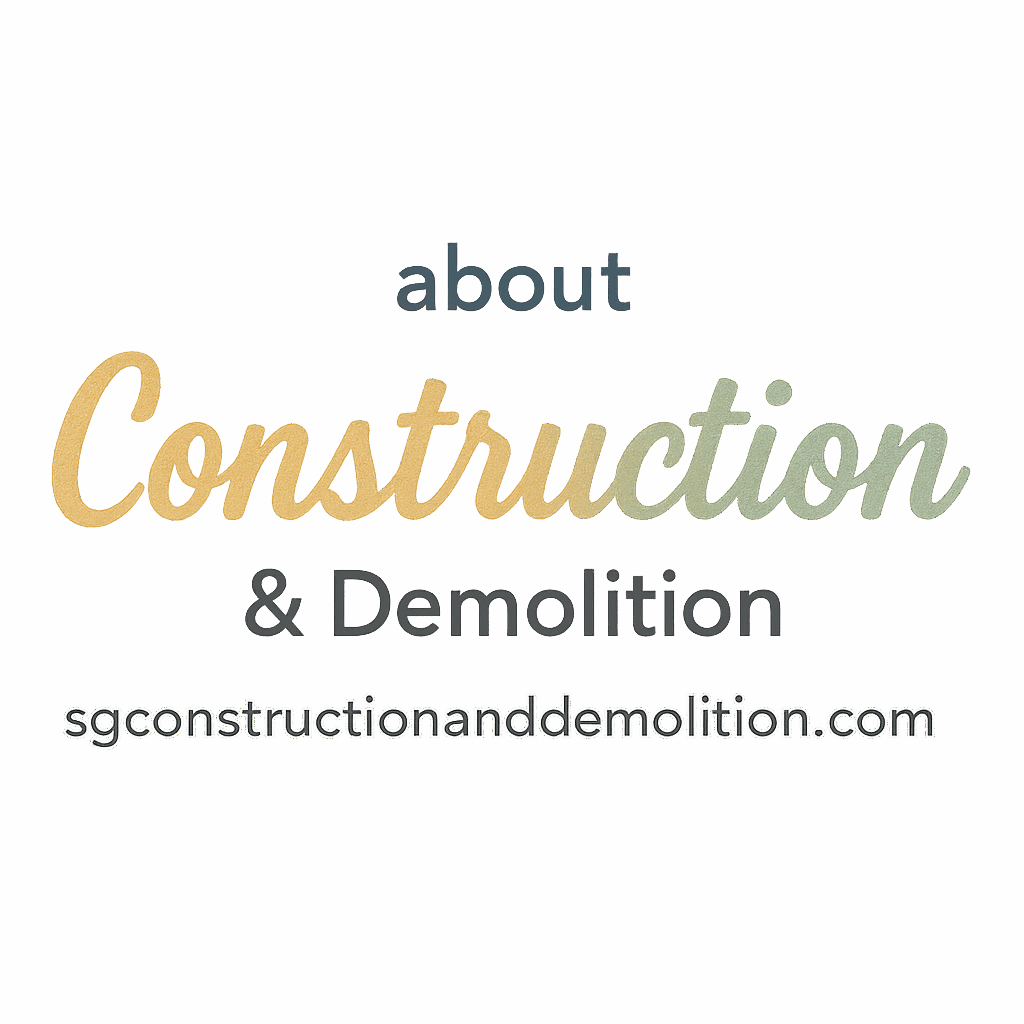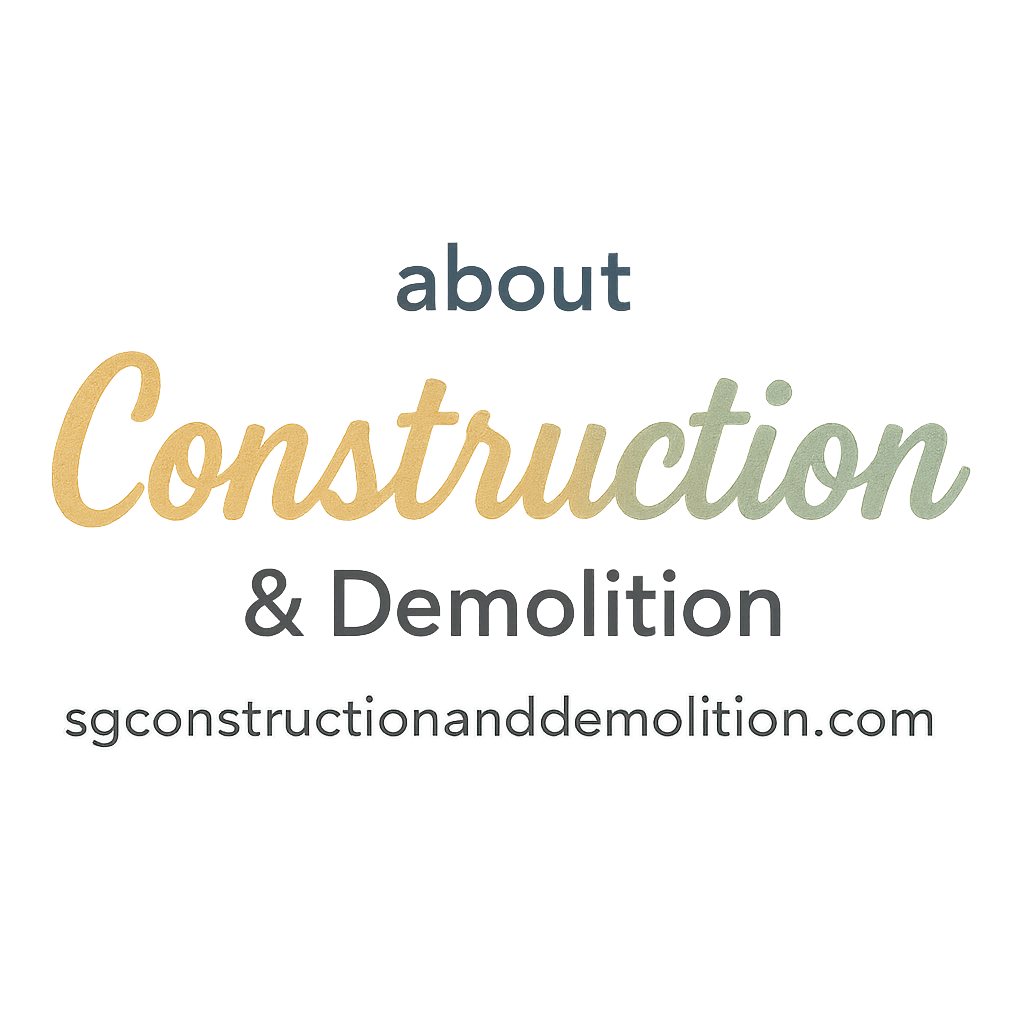Demolition might sound like the fun part of construction — smashing things down, creating a blank canvas. But truth be told, it’s also one of the riskiest stages in the entire process. If you’ve ever watched a building come down, you know it’s no walk in the park.
Whether you’re a contractor, a site manager, or a curious beginner just diving into the world of construction basics, it’s crucial to understand the hidden dangers that come with demolition. From collapsing structures to hidden asbestos, this guide explores 9 common risks during demolition in construction — and how you can avoid them.
Let’s break it all down — no pun intended!
1. Structural Collapse
Why Structural Collapse Happens
Let’s start with the big one: collapse. When you’re knocking down walls or tearing through load-bearing beams, the structure can fail faster than expected — sometimes without warning.
Old, weak buildings might already be compromised before the first hit. Remove one critical support, and boom — the entire structure may crumble like a house of cards.
Prevention Tips
- Conduct a structural assessment before any demo begins.
- Use shoring or temporary supports.
- Have experienced professionals on-site, especially during load-bearing removal.
For a deeper dive into safe demolition techniques, check out this guide.
2. Falling Debris
Common Falling Debris Hazards
Flying bricks. Steel beams. Shards of glass. Falling debris is one of the most obvious — and dangerous — risks on a demo site. It’s like a gravity-powered game of dodgeball, only with much higher stakes.
How to Mitigate Debris Risks
- Always wear a hard hat.
- Install protective netting and barricades.
- Control access to hazardous zones.
Want more tips on planning safety? It’s a must-read before starting any demolition project.
3. Asbestos Exposure
Hidden Danger in Older Buildings
If the structure you’re demolishing was built before the 1980s, chances are it contains asbestos — a sneaky material once loved for its fire-resistant qualities but now known to cause deadly lung diseases.
Safe Handling Practices
- Conduct an asbestos survey before demolition.
- Hire certified asbestos removal experts.
- Never break or disturb materials that might contain asbestos without proper PPE.
Check the beginners tag for more basics on how to approach risky demolition jobs.

4. Electrical Hazards
Live Wires and Utility Confusion
Electricity doesn’t take a day off just because you’re tearing down a wall. If live wires or underground lines aren’t properly shut off, one wrong cut can lead to shock, fire — or worse.
Prevention and Lockout-Tagout Procedures
- Always confirm utility shutoff before starting work.
- Follow strict lockout/tagout (LOTO) protocols.
- Use insulated tools when needed.
Explore more on electric safety in construction to protect your crew and site.
5. Fire and Explosions
Ignition Sources on Site
Fuel leaks, exposed wiring, or flammable debris — all of it creates a dangerous cocktail. One small spark and the entire demolition site can turn into a fireball.
Fire Safety Protocols
- Store fuels and chemicals properly.
- Keep fire extinguishers on-site and accessible.
- Train workers in fire response.
For innovative, eco-friendly demolition alternatives, visit green smart trends.
6. Equipment Accidents
Operator Error and Malfunctions
Heavy equipment is a blessing and a curse. While it does the heavy lifting, one slip-up from the operator — or one malfunction — can result in serious injury or even fatality.
Training and Safety Standards
- Operators must be licensed and trained.
- Maintain equipment regularly.
- Enforce safety zones around machinery.
Check out tools and equipment essentials for smarter site management.
7. Hazardous Materials and Chemicals
Common Materials to Watch Out For
Lead paint. Mercury switches. PCB-containing caulk. These aren’t just materials — they’re health hazards waiting to happen if not handled correctly.
How to Handle Chemicals Properly
- Get a hazardous material survey done.
- Use proper PPE.
- Have disposal plans for each hazardous material.
You’ll find more on this in construction myths — where misconceptions about safety can cost lives.
8. Noise and Vibration Hazards
Impact on Workers and Surroundings
Demolition is loud. Period. And beyond the ringing ears, high noise levels can permanently damage hearing or disturb nearby communities. Vibrations can also affect neighboring structures — especially older ones.
PPE and Environmental Planning
- Provide ear protection for all workers.
- Use dampening equipment when possible.
- Notify nearby residents before high-vibration tasks.
For emerging smart tech solutions to noise reduction, this resource can help you stay ahead.
9. Inadequate Planning and Oversight
Planning Equals Prevention
You can have the best crew, the latest gear, and still run into trouble if the planning’s off. From scheduling mistakes to forgotten safety permits, poor oversight is a silent killer.
Role of Project Management
- Assign a qualified site manager.
- Break the demo into clear, manageable steps.
- Review safety checklists regularly.
Learn more from our tag on project management — it’s your blueprint to safer demolitions.
Conclusion
Demolition isn’t just about tearing things down — it’s about doing it safely, strategically, and with respect for the risks involved. Whether it’s flying debris or unseen asbestos, every risk we covered here has the potential to derail your project or harm your team.
So the next time you step onto a demolition site, remember: smart planning isn’t optional. It’s your first tool, your best defense, and the key to a successful build-up once the dust settles.
Explore more demolition methods, tips, and trends at SG Construction and Demolition, your go-to hub for smarter, safer construction.
FAQs
1. What is the most dangerous part of a demolition project?
Structural collapse is typically the most dangerous, especially when load-bearing walls are involved. It’s essential to assess the structure before demolition.
2. How can I tell if a building contains asbestos?
Older buildings, especially those built before the 1980s, often contain asbestos. A professional asbestos inspection is the only safe way to know for sure.
3. Are demolition workers required to wear special protective gear?
Yes, PPE is essential. This includes hard hats, safety goggles, hearing protection, gloves, and sometimes respirators for hazardous materials.
4. Can I do small demolition jobs myself?
For small, non-structural tasks, yes. But anything involving electrical, asbestos, or structural elements should be handled by licensed professionals.
5. What permits do I need before starting demolition?
Permit requirements vary by region. Always check with your local building authority and follow the steps to ensure you’re compliant.
6. What tools are best for controlled demolition?
Excavators, jackhammers, skid steers, and sometimes hand tools for tight spaces. Explore our equipment tag for details.
7. How can I plan a safe demolition project?
Start with a risk assessment, secure proper permits, and create a safety plan. Visit our planning section for expert guides.


